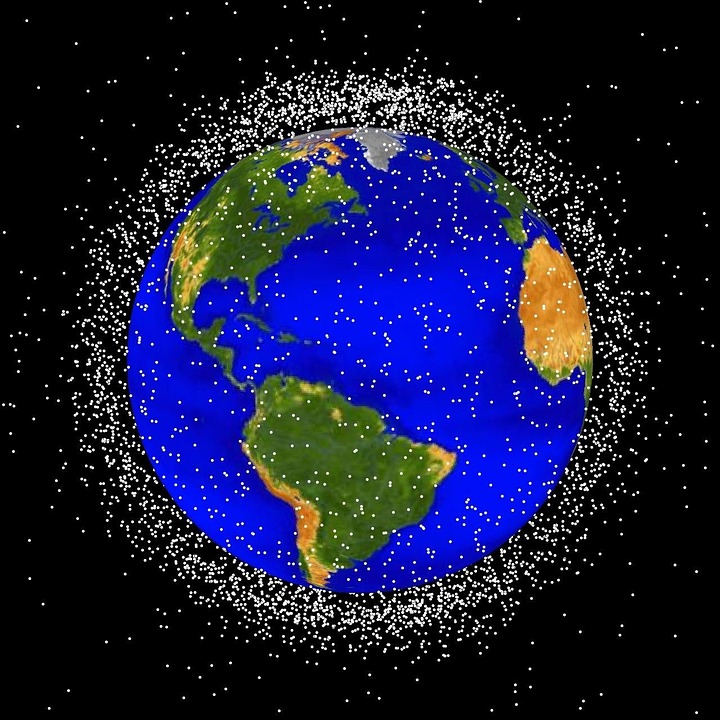How Space Junk Could Destroy the Future of Space Travel
Photo via pixabay.com under the Creative Commens license. https://pixabay.com/en/space-junk-space-debris-orbits-11645/
February 1, 2018
When rockets, space stations, and other spacecrafts escape the Earth’s atmosphere, extraneous components of the vehicles are ejected into the endless dark void of the universe and float conveniently away from the planet forever.
Or not.
In reality, those numerous unused and unneeded engine parts, metal scraps, and other nasty little bits hang around for a long, long time—like how those little bits of popcorn get stuck in your mouth and ruin your whole day. Since the first man-made spacecraft, Russia’s Sputnik 1, was launched into space in 1957, we’ve had chunks of trash from artificial satellites and other machines flying in orbit. “There are more than 20,000 pieces of debris larger than a softball orbiting the Earth,” NASA stated in an article on the topic, “. . .[and] 500,000 pieces of debris the size of a marble or larger.” When a marble travels many thousands of miles an hour, it can cause significant damage to satellites or other spacecraft.
What does this mean for space travel? Nothing good, considering the drastic and alarming increase in the volume of space junk floating around our planet. Even now, the International Space Station frequently makes changes in its course due to debris in its path. However, if so much as a small piece hit the station, it could potentially kill every astronaut inside and destroy the whole satellite. There are a maximum of ten people occupying the International Space Station at any one time; imagine the loss of life involved in a large-scale colonization of a foreign planet if anything hit the passengers’ spacecraft!
This isn’t just a future problem, either. The first manned expedition to Mars is scheduled for 2025 through the Mars One company. Sure, it would be terrible (and expensive!) if our first attempt at interplanetary colonization fails before it really begins, but if the spaceship blows up it will also add an unimaginable amount of extraterrestrial garbage to our zero-gravity landfill (because wrecking the planet just wasn’t enough for us humans). If we keep continuing our trend of dumping junk into the exosphere, space travel will become too dangerous to continue; we’ll be stuck on Mother Earth forever like a jobless mid-twenties nerd stuck in his parents’ basement playing video games and eating Doritos.
So, how do we fix this? Scientists have come up with a plethora of solutions to the space junk problem. A space “garbage truck” and a giant satellite magnet have both been suggested. Another solution, this one put forward by NASA, suggests that a giant laser attached to one of the poles could push the debris away from incoming satellites. Ah, NASA. So far, though, nothing has been implemented, and unfortunately, we can’t just wait for that stuff to clear up, either. It could take decades upon decades for the trash to burn up in our atmosphere, which would be terrible for our current prospects of space travel. By the time the stuff takes care of itself, Star Wars will have given up squeezing out low-quality sequels and moved on to cringey reboots!
For now, we just have to make sure we care for our orbital environment just as much as we care for the Earth . . . and petition for space lasers. Those would be cool.






